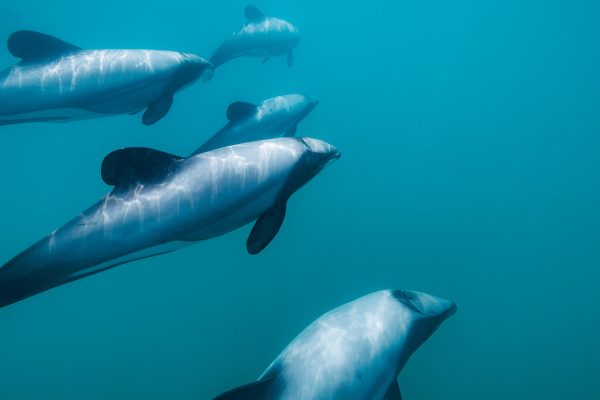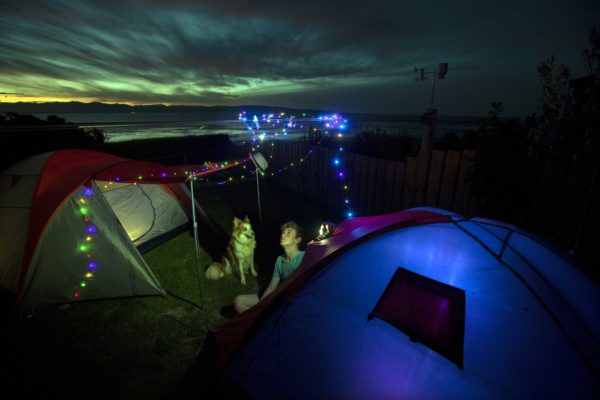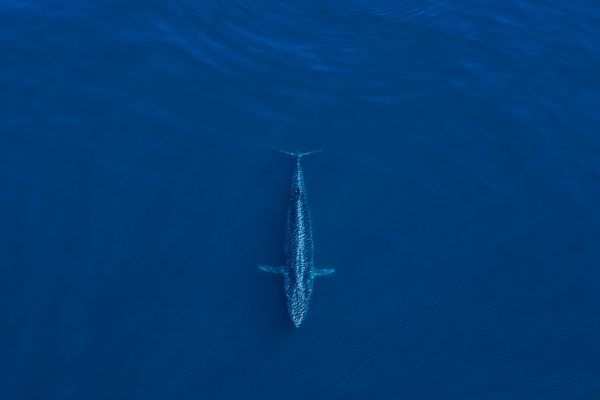Return to Pukapuka
After three decades abroad, an anthropologist’s daughter returns to the remote atoll of her childhood, and is welcomed home.

Pukapuka hangs in shades of grey, suspended in mist between sea and sky. For the past 30 years, I could not be sure this Cook Islands atoll still existed. Even now, after sailing for days through blue, it’s hard to imagine that its people had survived cyclones and isolation, or that I ever lived here.
From 1977–1981, my American family lived on the main island of Wale while my father completed his dissertation research for a doctorate in anthropology. I ran around as an atoll child and perfected the art of palakoka—simply roaming around—from dawn till dusk. I fought with other children over the fish brain and eyes, the juiciest parts. I spoke Pukapukan before I spoke English, and as we had no mirrors, I am certain I thought myself dark and brown like my playmates. I belonged to the atoll.
When I was five, we left Pukapuka for Hawaii. Arriving in the big city of Honolulu, I saw the street lamps and said, “Many moons”, my mother says. As happened to Pukapukan children who moved to New Zealand, the school put me in a special-needs classroom—I could read the words dog and car, but I could not match the words with the objects they signified. With time, I adapted, although I think I always felt different.
Academically, I went on, by no coincidence, to receive a doctorate in child and cross-cultural psychology. I completed my residency at a hospital in San Francisco, but disliked the cold grey fog, the concrete office building and the narrow confines of hospital psychology. I decided to return to Pukapuka.
At Auckland Airport just weeks later, 82-year-old Mama Latea—who had cared for me like her own child all those years before—hugged and kissed me and said, “I love you, my daughter, you’ve come home.” Pukapukans have long memories and a strong sense of community. No one is forgotten, and it meant a lot to everyone that I had remembered, too.
Pukapuka must be one of the most challenging places in the world to get to. After two months waiting for a boat, and seven days at sea, I stepped onto the atoll of my childhood.
Mama Vai, now with bifocals and a walking cane, called out, “Amelia, Amelia”, and cupped my cheeks in her hands, gently rocking us back and forth with tears in her eyes.
Etwina, who worked for four years typing and translating my father’s 10,000 pages of field notes, gently sniffed me across the cheek and nose. “You used to follow your father around when he would talk to the old people,” she said. “I know all those old legends and makos [chants] from typing.”
I had always thought of anthropology as a colonial endeavour, and believed that people could represent their own dynamic cultures. Thirty years later, I find numerous Pukapukan research assistants, collaborators, translators, typists and friends grateful to my anthropologist father.
“Your father gave me my dignity and my culture,” said Leilimua, who was my father’s translator. “I would have worked for him for the rest of my life.” Tears welled up in his eyes and he pressed $100 hard into my palm.
Each village took turns feeding me as a way of thanking my father. First, Ngake village brought me two coconut crabs, a garbage bag full of fish, 20 drinking nuts and a basket of taro. Most of it went into the deep freeze and we all ate it for a week. As an adult, I no longer had to fight for the fish brain and fish eyes. I ate a coconut crab for the first time in 30 years, the orange grease running down my forearms, and savoured again a frigate bird spit-roasted over coconut coals. It tasted so full of memory; I could eat only a small bite at a time.
I spent a lot of the time sitting under a tin-roofed imu, perfecting the art of angi angi te matangi tangi—the verb for sitting and taking in the wind while talking with friends. There was a running commentary on the strength of the wind, the direction of the wind and how wonderful and cool the wind felt as we looked at 30-year-old slides playing on my laptop.
My old friends laughed and cried when they recognised a face in a picture, pictures which I passed on to them, returning a small piece of the past.
It’s hard to imagine another place in the world where you can return after three decades and everyone remembers your name and face.
Pukapuka has shaped me both in presence and absence. But I still have much to learn from Wale. Like other Pukapukans who grew up abroad, I lack a lot of what might be considered basic knowledge for atoll life. I watched in envy as a seven-year-old husked ten coconuts in ten minutes, and a five-year-old brought home a large catch of reef fish.
Today, some 10,000 Pukapukans live ‘outside’—in Rarotonga, New Zealand or Australia. Only 500 remain on the atoll.
“You’re an expat,” said Pio Lavalua. “You’re like a lot of us, raised part of the time in the papa [white] world and part of the time here in Pukapuka. But your pito [bellybutton] is here.”

















